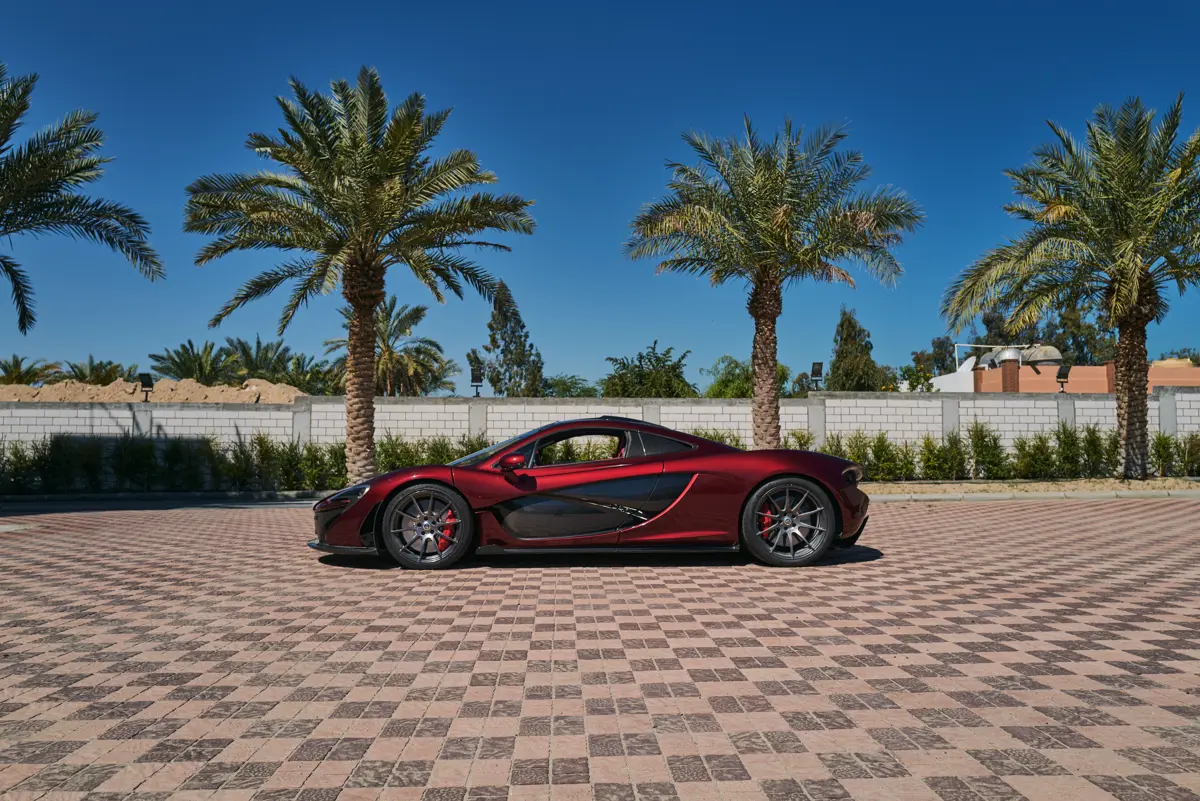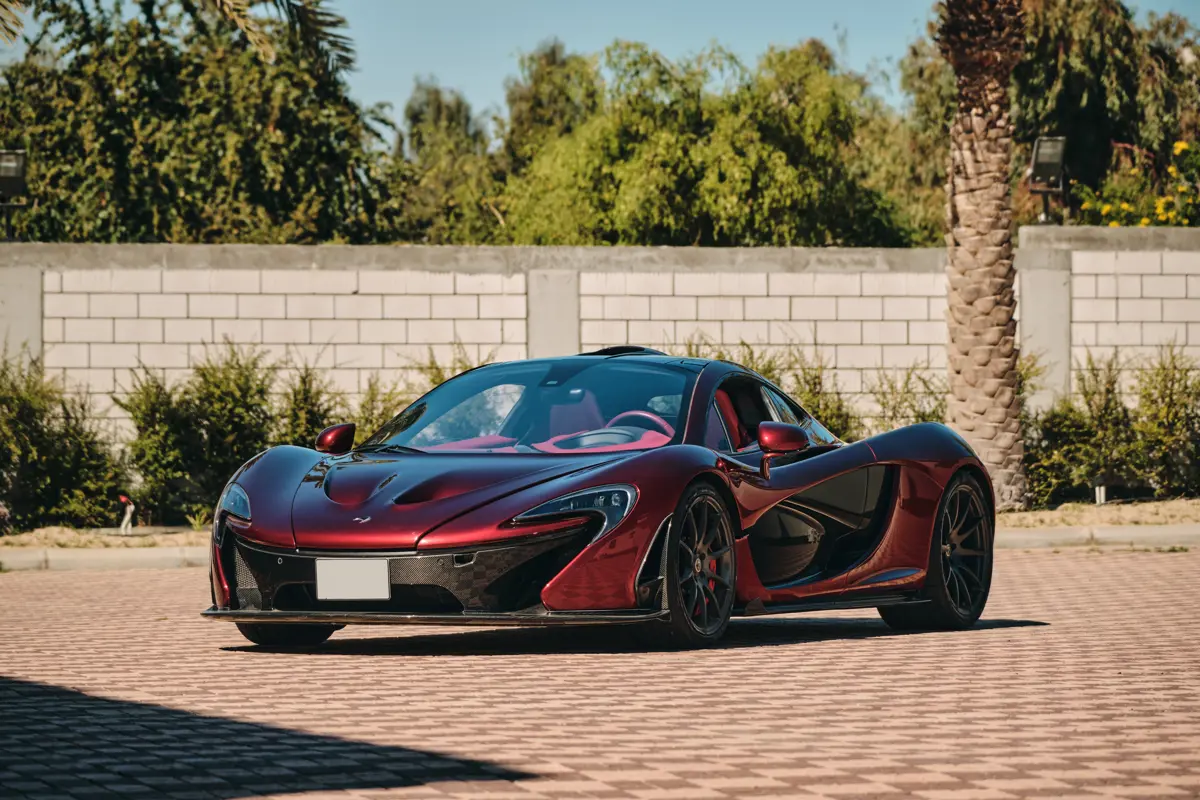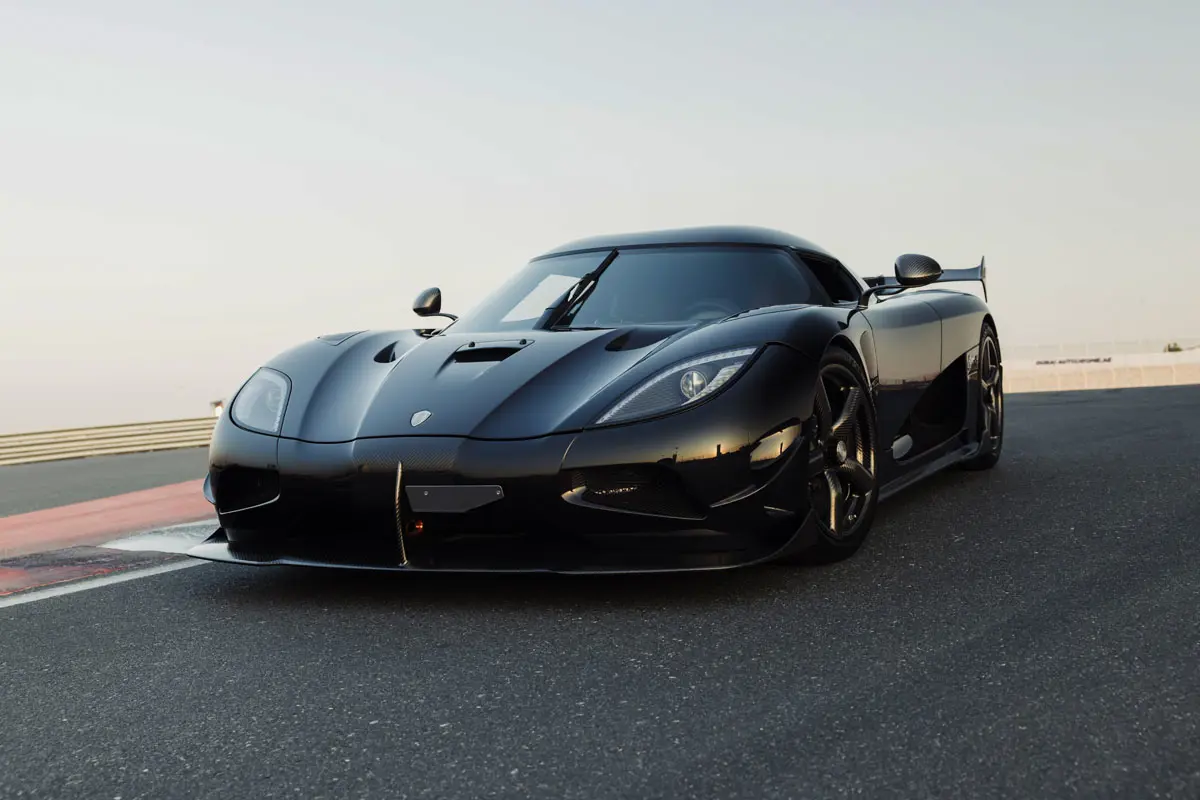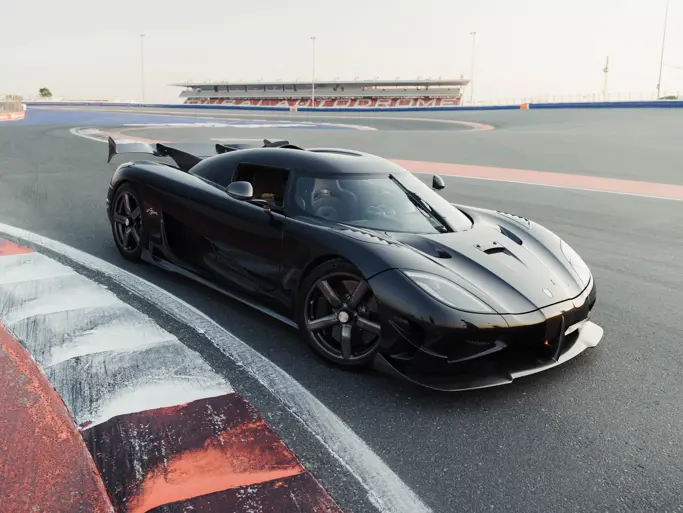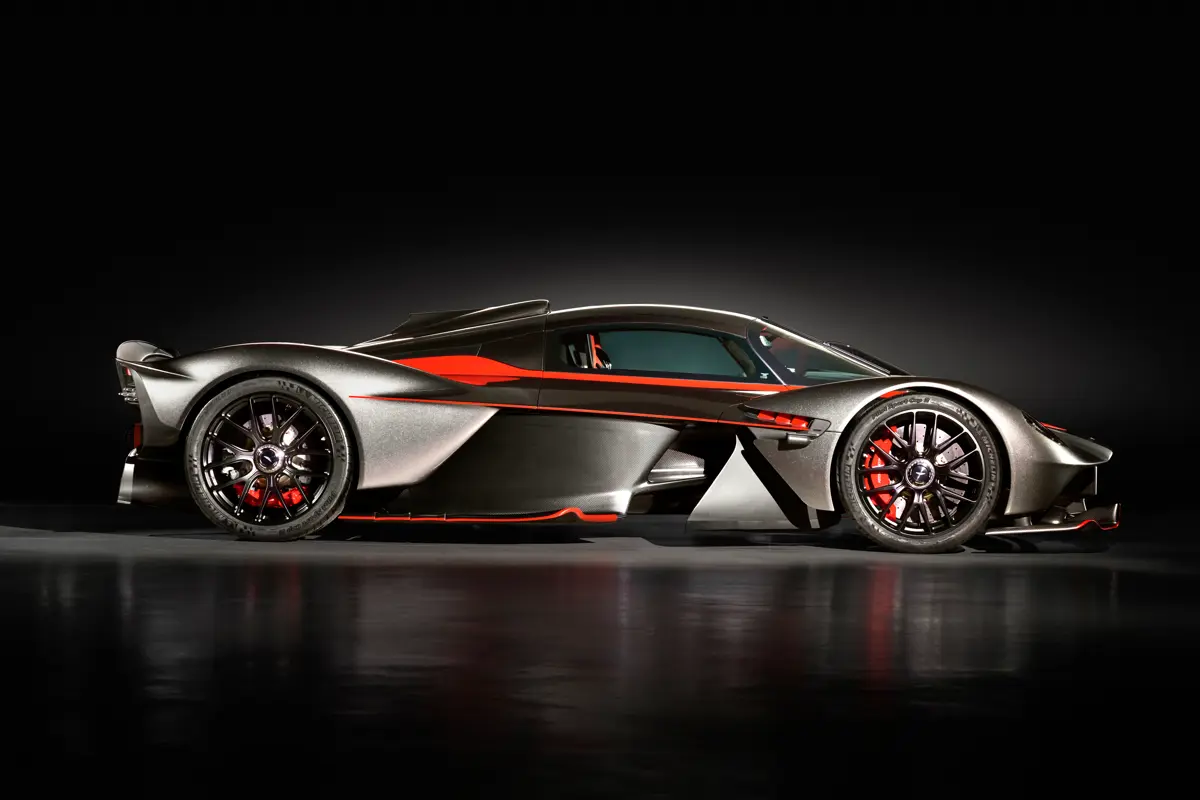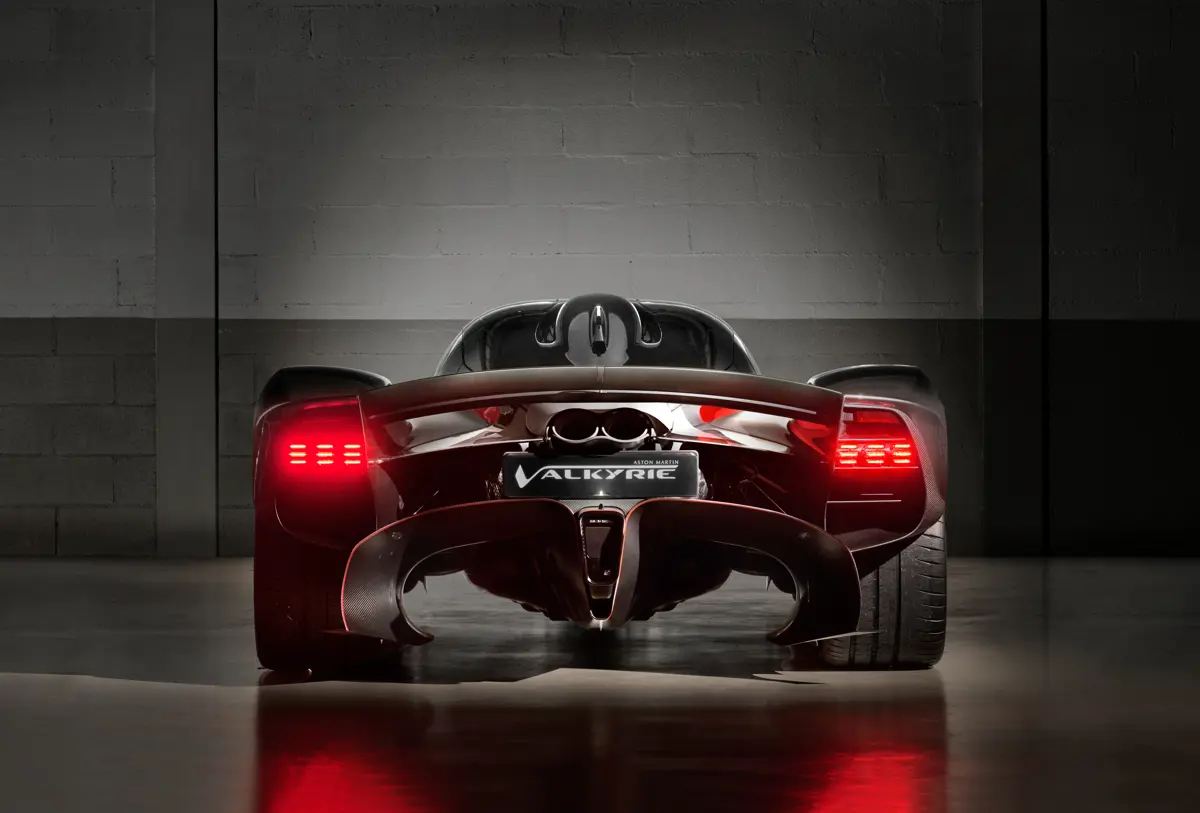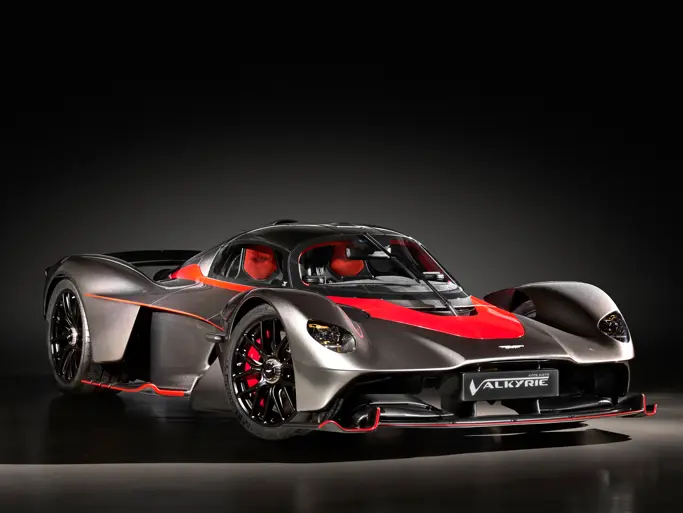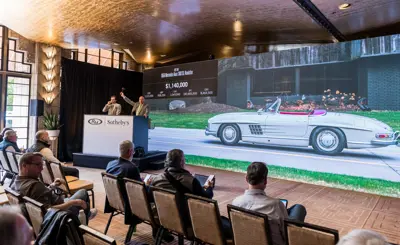Automotive history is punctuated with machines that pushed the boundaries of performance and engineering—cars in the mould of the Mercedes-Benz 300 SL ‘Gullwing’ that not only raised the bar but truly changed the game. But while direct mechanical fuel injection and a space frame chassis were significant developments in 1954, the most impressive technological leaps have arguably come in more recent years, as the combustion-engined supercar has gradually given way to the hybrid-era hypercar. Nowhere is the onward march of progress better represented than in a trio of spectacular cars heading to the auction block at RM Sotheby’s inaugural Dubai sale on 9 March.
Leading the charge in 2013—and stealing a march on soon-to-be rivals from Porsche and Ferrari—was the McLaren P1, a car that combined the flame-spitting power of its 3.8-litre V-8 engine with a 131-kilowatt electric motor to develop a combined 903 brake-horsepower. The first of what would become known as The Holy Trinity was a true watershed moment, and not just for its world-moving power output. From its all-carbon monocoque bodyshell to its interlinked hydropneumatic damping system, the McLaren P1 was a technological tour de force that rendered all its rivals—at least until the arrival of the 918 Spyder and LaFerrari—absolutely, resolutely obsolete.
A revolutionary drivetrain endowed the McLaren with truly impressive performance, allowing it to hit 62 mph in just 2.8 seconds, 124 mph in 6.8 seconds, and 186 mph in just 16.5 seconds—an incredible five seconds quicker than its world-beating forebear, the McLaren F1. But it wasn’t the headline sprint times that most impressed at launch, rather, it was how the laws of physics seemingly failed to apply as soon as the P1 stepped foot on track.
The secret was an active aerodynamics package unlike anything previously seen on a supercar. Select Race Mode, and the car drops 50 millimetres with an aggressive bang; the springs and dampers become some 300 per cent stiffer, and, with a whirr of hydraulics, a vast rear wing extends 300 millimetres above the rear of the car. At pace, the resulting downforce amounts to a staggering 600 kilograms at 161 mph. Any more than that and the suspension could become overloaded, so keep your foot planted and the car actively trims its aerodynamic surfaces, becoming more slippery and shedding downforce. Slam on the anchors and the rear wing stands on end, acting as an air brake. It is the sort of technology you might see on a fighter jet—a comparison that could verge on hyperbole, until you experience the game-changing performance firsthand.
Soon followed by the even more outrageous Ferrari LaFerrari and beautifully resolved Porsche 918 Spyder, the McLaren P1 was quickly matched in terms of outright performance—but the trio of manufacturers wouldn’t have it all their way for long. In Christian von Koenigsegg’s eponymous firm, founded in 1994, the conventional supercar hegemony was taken on by a true disruptor that had already delivered a raft of bonkers supercars. Its Agera R, launched three years before the P1, boasted 947 horsepower from its 5-litre twin-turbocharged V-8. Shortly after launch, the Agera stunned the motoring world when it broke no fewer than six production car world land-speed records, becoming not only the fastest car to reach 300 km/h (186 mph) but also the quickest to come to a complete stop from the same speed.
By the time the McLaren P1 burst onto the scene, the updated Agera R had joined the lineup, bringing with it cutting-edge technology, including hollow carbon fibre wheels that were 40% lighter than their aluminium counterparts yet significantly stronger. Improved aerodynamics were added to the package, while power from the twin-turbocharged V-8 engine was upped to an incredible 1,124 horsepower with 885 pound-feet of torque. Things only got better in 2015 with the arrival of the Agera RS, a more track-focused variant that borrowed technology from the flagship One:1 hypercar. Among the improvements was tweaked bodywork, a substantial front splitter, and an active rear spoiler which, combined, generated a P1-baiting 450 kilograms of downforce 155 mph.
Of the 25 Agera RS chassis built, three of the most special and exclusive examples—including chassis 7123, which is destined for Dubai—were dubbed the Agera RSR and delivered to Japanese clients. Wickedly quick, each of the trio boasted a 1,160 horsepower 5-litre V-8 and borrowed heavily from the One:1, while shorter roof scoops allowed the targa roof to be stored in the car’s front compartment. Finished in black with red accents, the second of three RSRs built offered one of the most extreme iterations of the Agera—a car that can still rightly be counted among the fastest of all time.
Fast forward to the present day, and a new car has joined that exclusive club: the Aston Martin Valkyrie Coupé. The British firm has an incredible pedigree when it comes to performance cars, and though it has, in recent years, turned out a line of incredible machines, including the One-77 and Vulcan, nothing comes close to the Valkyrie in terms of technological ambition or outright performance. The result of a collaboration with Red Bull Racing (heard of them?), the Valkyrie is a stunning combination of cutting-edge design and Formula 1 know-how wrapped up in a truly stunning visual package capable of stopping traffic. It is quite simply one of the most outrageous machines to ever take to the road—and that’s before you even look at its performance credentials.
At its heart lies a 6.5-litre naturally aspirated V-12 lump tuned by Cosworth that became the most powerful of its type to ever be fitted to a production car—but its 996-horsepower engine is just part of the story. Thanks to Integral Powertrain Ltd and Rimac, the Valkyrie also boasts a hybrid powertrain that contributes an additional driver-engaged 143 horsepower to the headline figure, drawing it within touching distance of the Koenigsegg Agera RSR. Wring the V-12 to its 11,100 rpm redline and the Aston Martin will reach 62 mph in just 2.6 seconds—keep your foot planted on the accelerator and it will top out at 250 mph. That figure would no doubt be higher were it not for one of the most ingenious aero packages this side of the Italian Grand Prix—good for an astounding 1,000 kilograms of maximum downforce.
“The Valkyrie is exotic and vastly exciting,” reckoned Top Gear’s Ollie Marriage, “and contains one of the most thrilling, visceral and intense internal combustion engines ever”. Not a commendation you would expect to be bestowed upon a hybrid hypercar, and one of the reasons we are convinced the Aston Martin will go down in the annals of history as one of the all-time greats.


